Two particles AandB are moving with uniform velocity as shown in (Fig. 5.130) given below at t=0.
(a) Will the two particles collide ?
(b) Find out the shortest distance between two particles.
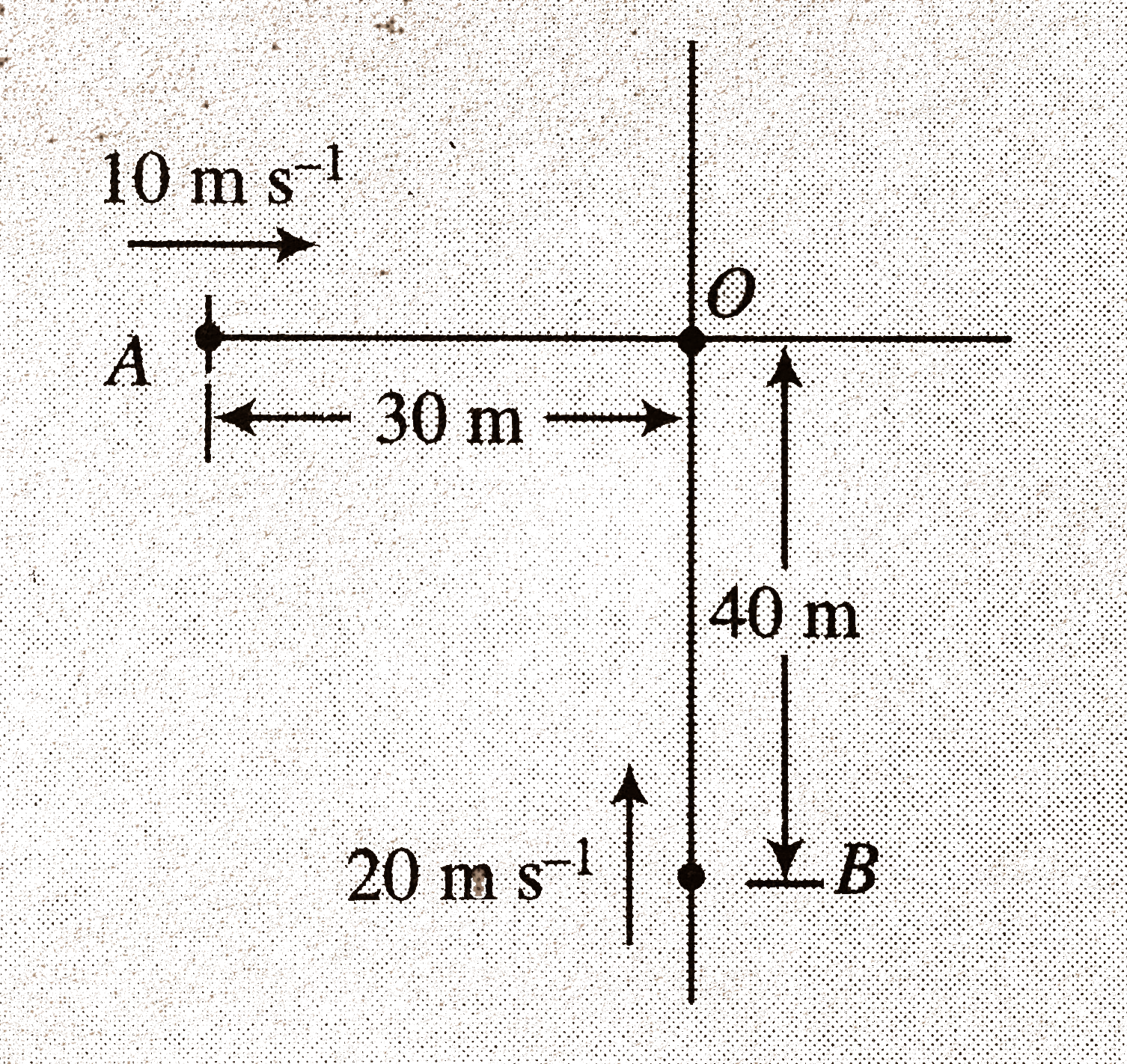 .
.
Observing A from the frame of B
Let us draw →vAB,
→vAB=→vA−→vB=→vA+(−→vB)
tanθ=1020=12
Again tanθ=ADCD=AD40=12
⇒AD=20⇒DO=10
⇒BC=10
Hence, the shortest distance between the particles
dshort=BCcosθ=10cosθ=10×2√5=4√5m
Since the closest distance is non - zero, therefore, the particles will not collide.
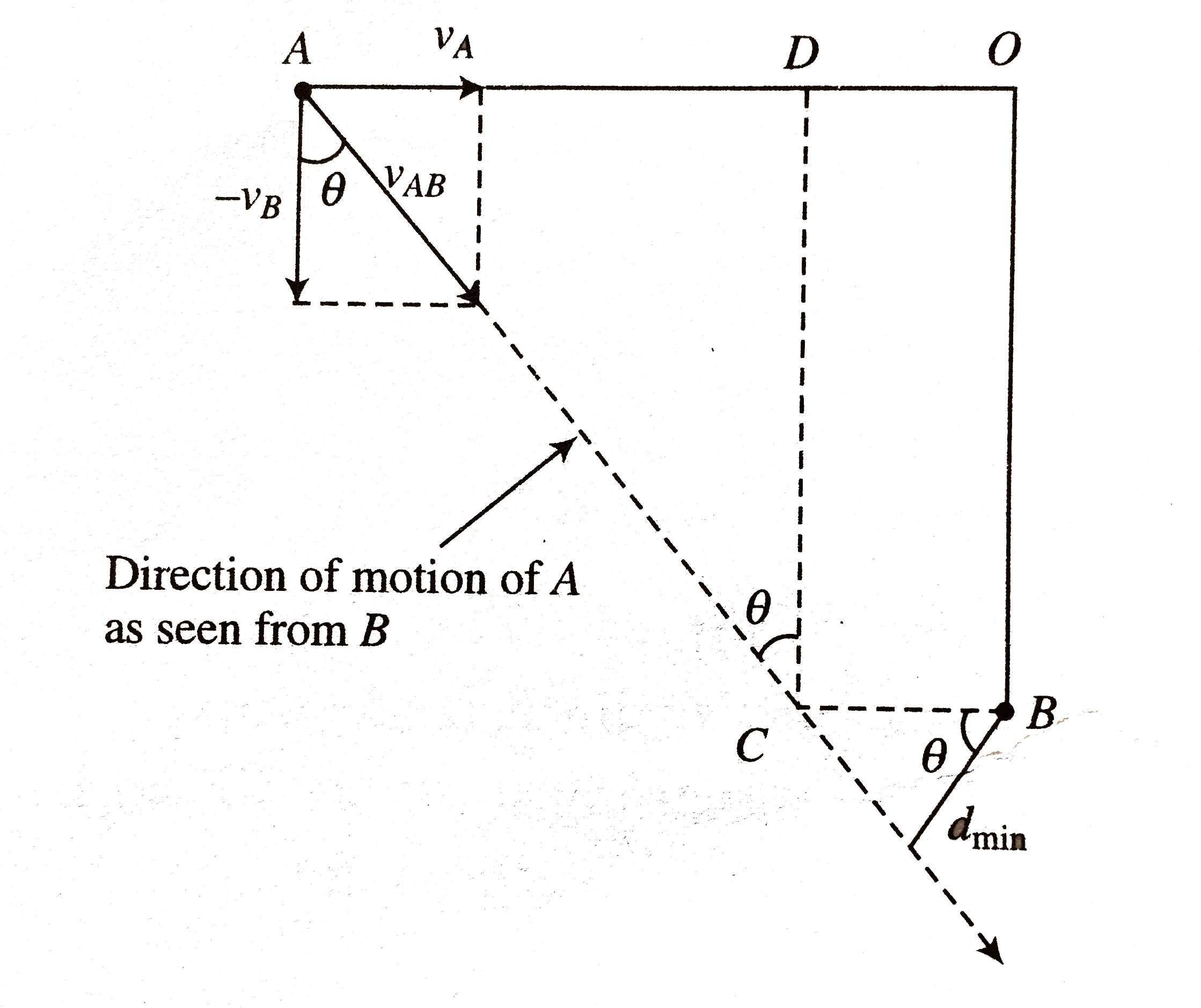 .
.
Topper's Solved these Questions
- KINEMATICS-2BOOK - CENGAGE PHYSICS ENGLISHCHAPTER - KINEMATICS-2EXERCISE - Solved Examples
7 Videos
- KINEMATICS-2BOOK - CENGAGE PHYSICS ENGLISHCHAPTER - KINEMATICS-2EXERCISE - Exercise 5.1
15 Videos
- KINEMATICS-1BOOK - CENGAGE PHYSICS ENGLISHCHAPTER - KINEMATICS-1EXERCISE - Integer
9 Videos
- KINETIC THEORY OF GASESBOOK - CENGAGE PHYSICS ENGLISHCHAPTER - KINETIC THEORY OF GASESEXERCISE - Compression
2 Videos
Similar Questions
Two particles A and B moving in a plane have velocities as shown in figure .Relative velocity of A w.r.t B
View SolutionTwo particles are moving in different circles in same plane with different angular velocities as shown in figure. At t = 0, initial positions of particles A and B are shown by dots on the respective circles. Initial distance between particles is 1m. Particle A move anticlockwise in the first circle whereas B moves clockwise in the second circle. Angle described (rotated) by A and B in time 't' are θA=(π2t) and θB=(πt) respectively. here θ is in radian and t is in second. Radius of each circle is shown in diagram.
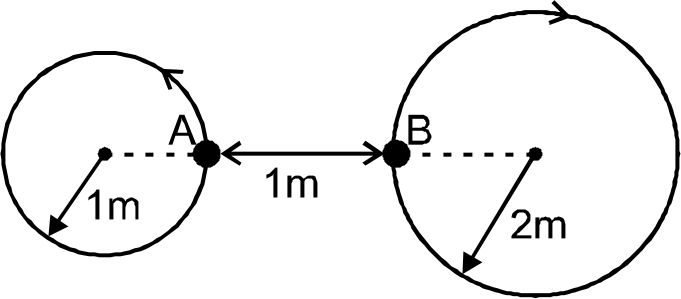
At time t=2 second, the angular velocity of the particle A with respect to the particle B is
View SolutionTwo particles A and B are moving as shown in figure. At this moment of time, the angular speed of A with respect to B is?
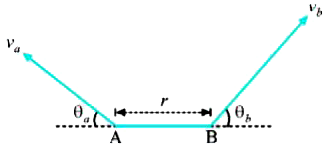
View Solutions-t graph of two particles A and B are shown in fig. Find the ratio of velocity of A to velocity of B.
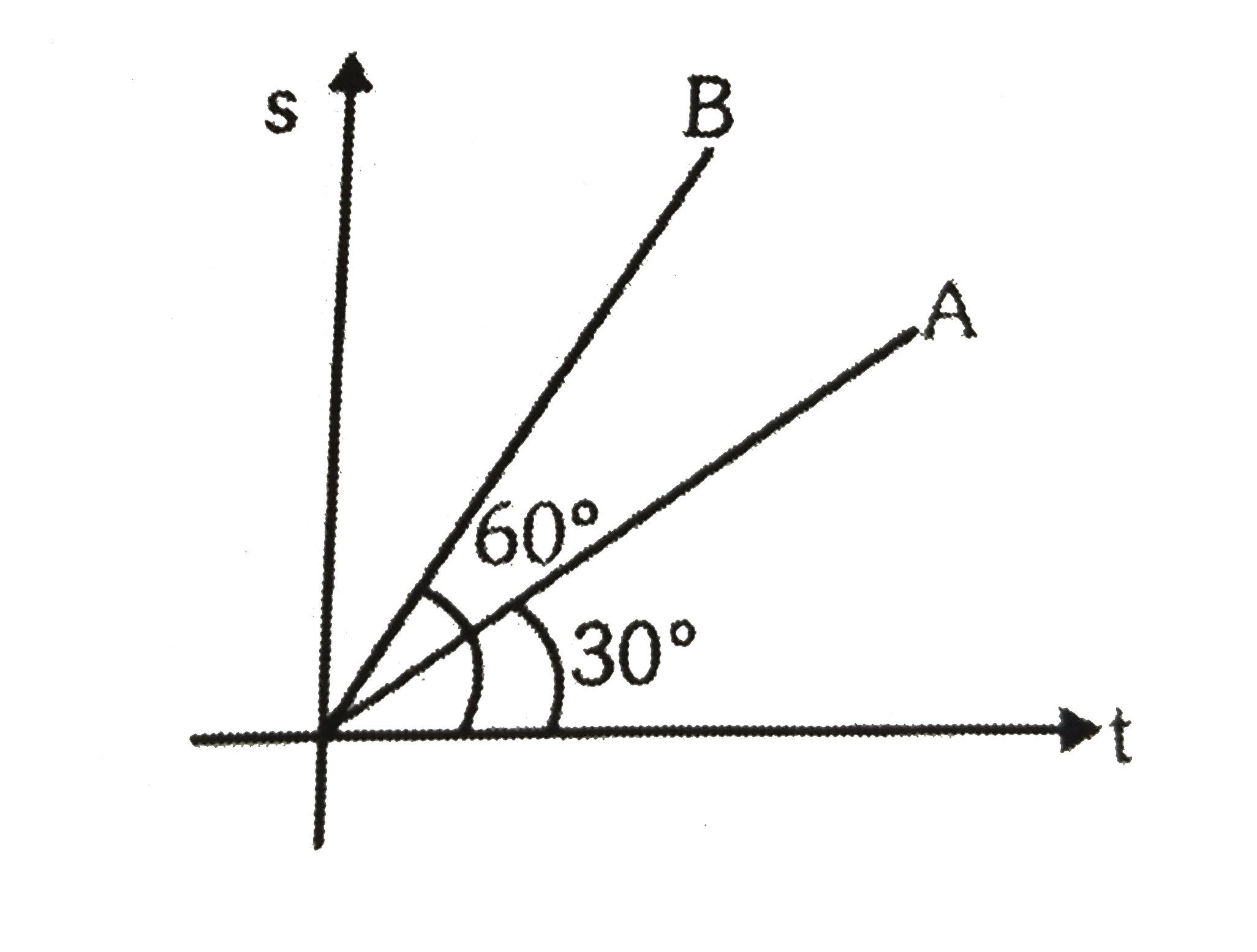
View SolutionTwo particles start moving simultaneously with constant velocities u1andu2 as shown in (Fig. 5.194). First particle starts from A along AO and second starts from O along OM. Find the shortest distance between them during their motion.
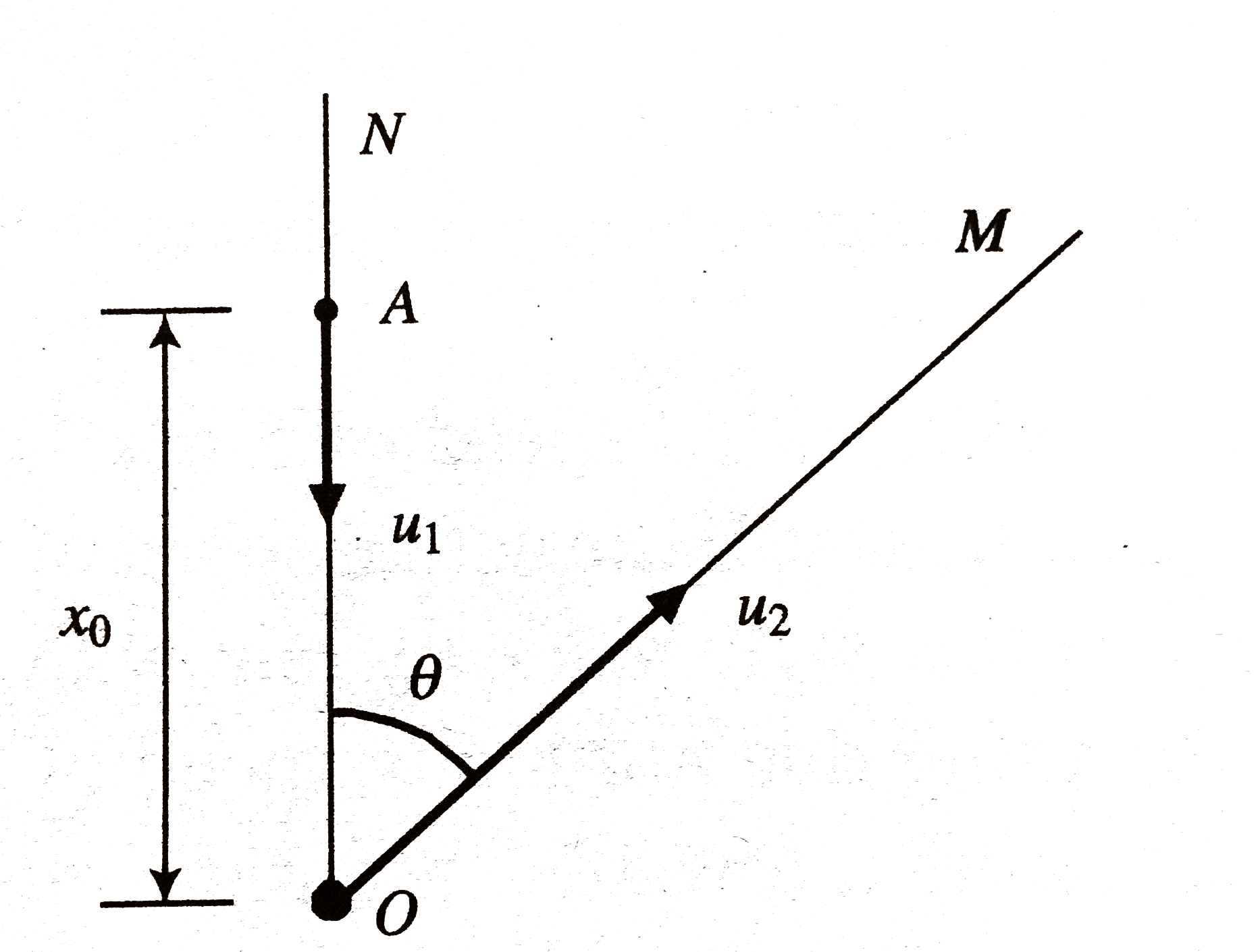 .
.
View SolutionTwo objects AandB are moving along the directions as shown in (Fig. 5.77). Find the magnitude and direction of the relative velocity of Bw.r.t.A.
 ,
,
View SolutionA particle moves with a uniform velocity of 50 m/s for 20 min. What is the velocity of particle at t = 2 min ?
View SolutionParticles AandB move with constant and equal speeds in a circle as shown in (Fig. 5.164). Find the angular velocity of the particle A with respect to B, if the angular velocity of particle Aw.r.t.O is ω.
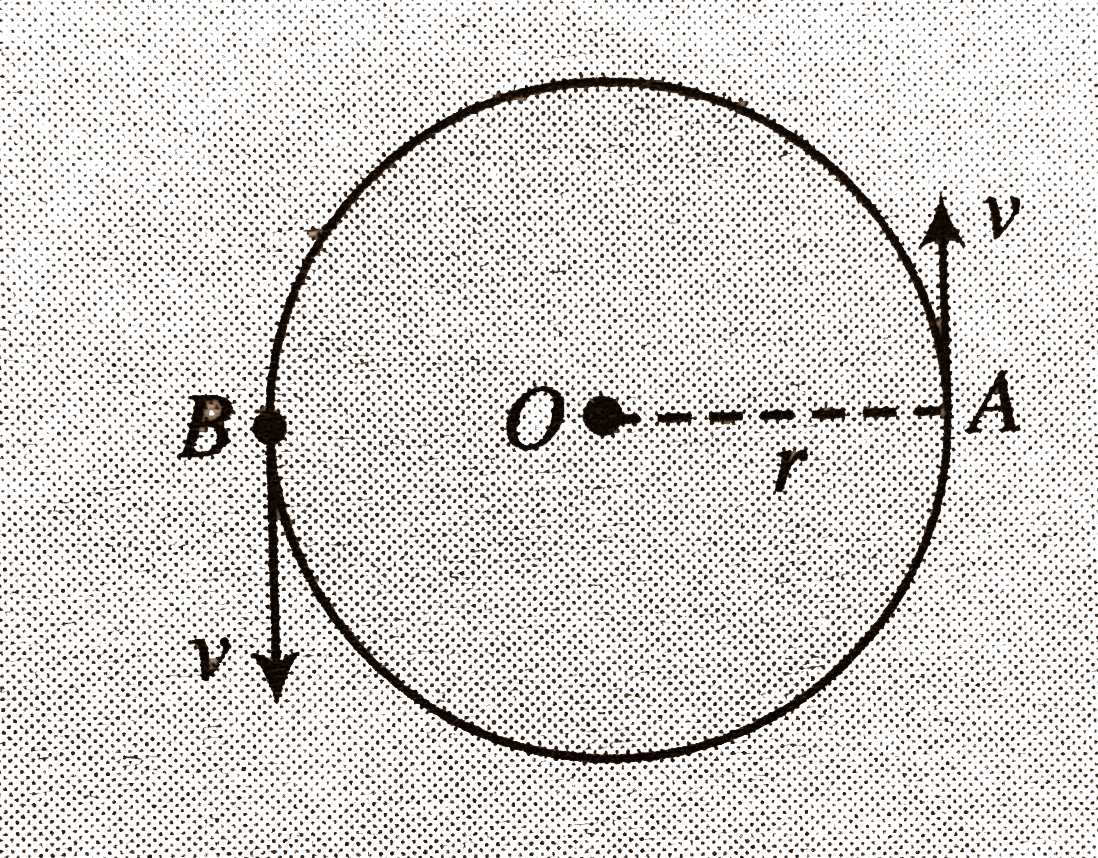 .
.
View SolutionTwo particles, A and B, are in motion in the xy-plane. Their co-ordinates at each instant of time t(t≥0) are given by xA=t,yA=2t,xB=1−tandyB=t. The minimum distance between particles A and B is :
View SolutionTwo particles A and B are moving along x-axis. Their x-coordinate versus time graphs are as shown below

(a) Find the time when the particles start their journey and the x-coordinate at that time.
(b) Find velocities of the two particles.
(c) When and where the particles strike with each other.
View Solution
